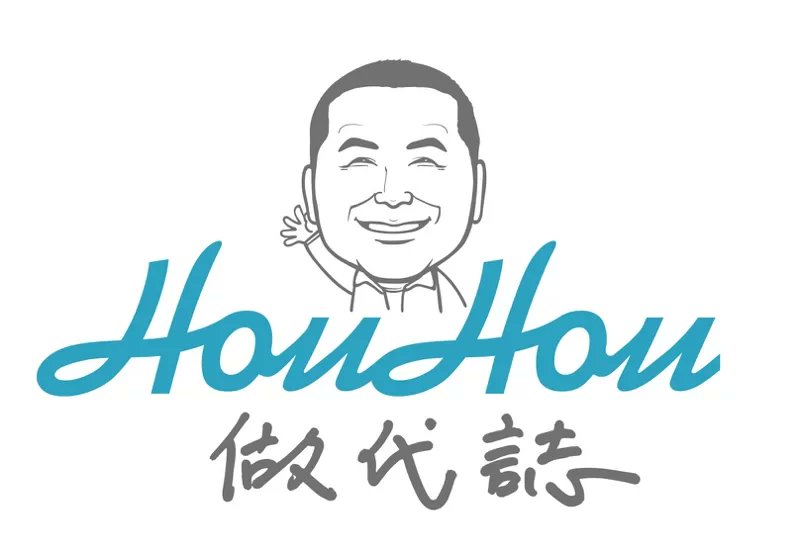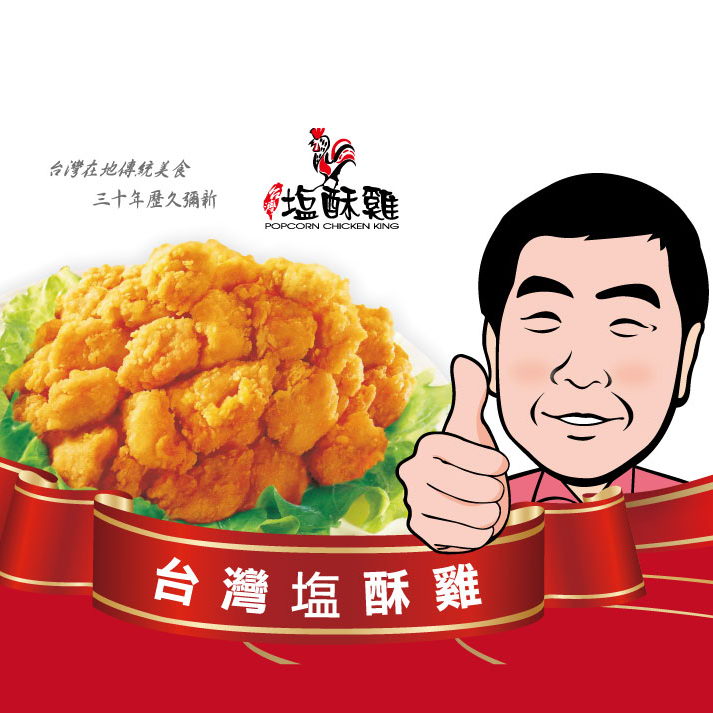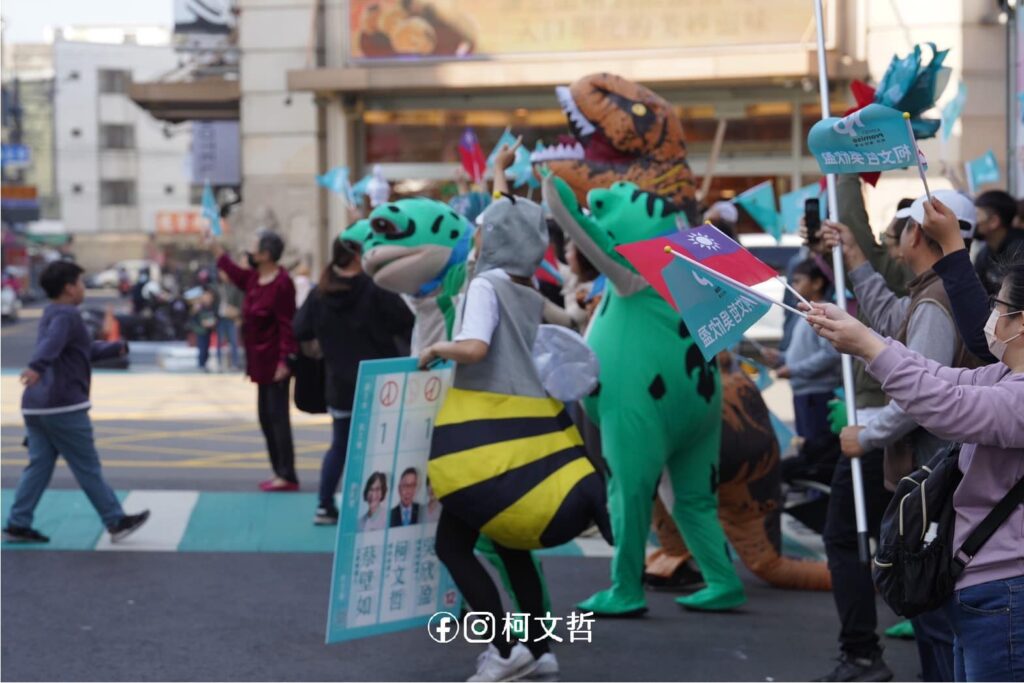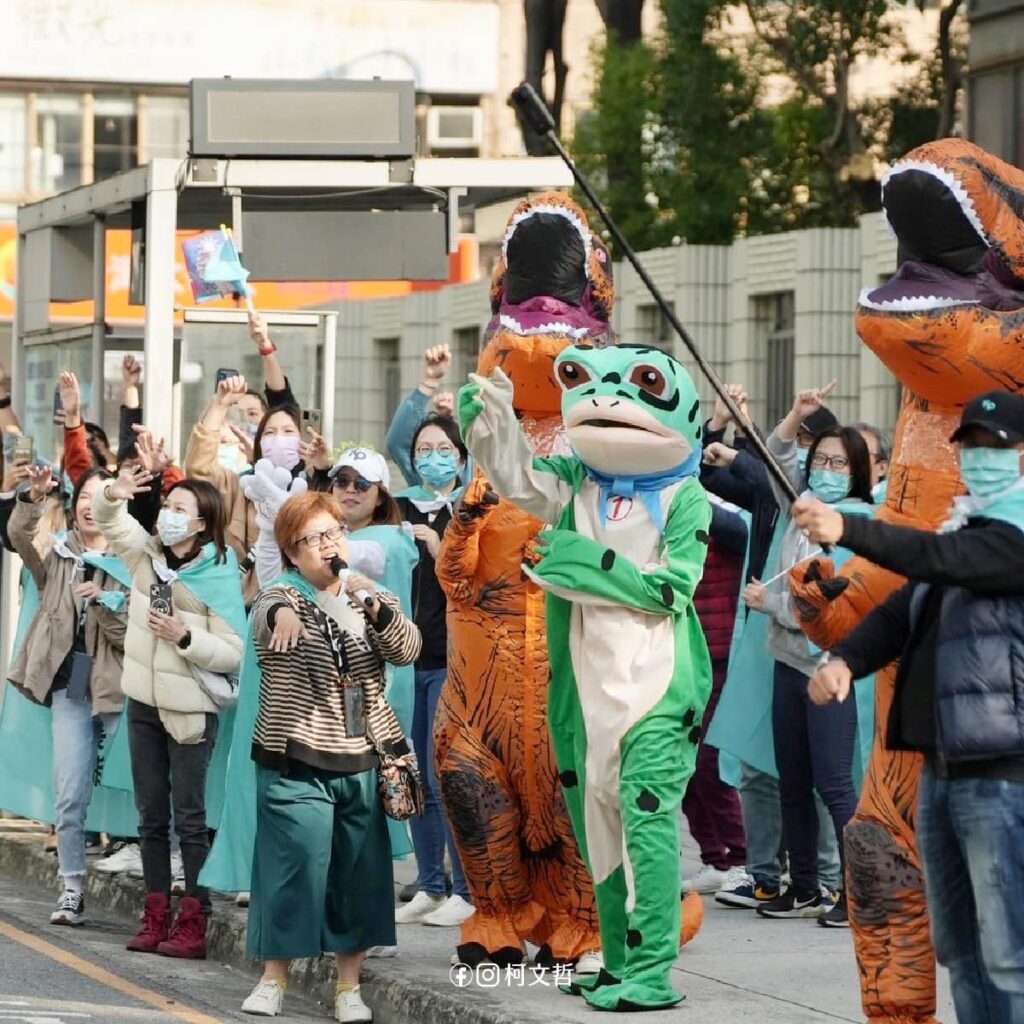by Brian Hioe
語言:
English
Photo credit: Screenshot
THE 2024 CAMPAIGN season largely continued the aesthetic tropes of previous election cycles.
The Lai campaign in particular has leaned into animal imagery for DPP presidential candidate Lai Ching-te and vice presidential candidate Hsiao Bikhim. This consists of a dog mascot for Lai, based on a deceased pet of his, and cat imagery for Hsiao. Hsiao is famously known as a cat person, similar to President Tsai Ing-wen. At least one of Tsai’s cats was originally gifted to her by Hsiao.

Photo credit: Lai Ching-te/Facebook
By contrast, the KMT has not leaned into animal imagery, though its vice presidential candidate Jaw Shaw-kong is a dog owner. A logo for the Hou campaign features Hou’s face, but it draws comparisons to the logo for a well-known fried chicken chain.


The Hou logo (left) and the logo for fast food chain Popcorn Chicken King. Photo credit: Hou campaign/Popcorn Chicken King
Some aspects of previous election campaigning have been scaled down, with new city ordinance measures in Taipei leading to an absence of campaign flags that were previously ubiquitous during election season. Candidates have also, for the most part, shied away from the campaign balloons that were popular in previous election cycles after being popularized by Mazu-based DPP politician Lii Wen.
Nevertheless, Ko Wen-je of the TPP has used a cartoon balloon of Ko in street rallies. Otherwise, when TPP politicians tour night markets and other places, sometimes they include individuals in mascot costumes in their entourages, so as to convey an image of youth.

Balloon of Ko Wen-je. Photo credit: TPP/Facebook


TPP events with mascot suits. Photo credit: Ko Wen-je/Facebook
Election ads released by the KMT and DPP, too, have proven revealing about the dynamics of campaigning.
The “On the Road” ad
The most attention has been received by a DPP ad titled “On the Road”, which features Tsai and Lai driving in a car, then Tsai symbolically handing the baton to Lai and Hsiao by getting out of the car when Hsiao gets in and handing Lai the keys. The ad has gained a great deal of attention for depicting the candidates interacting conversationally, while also highlighting their personalities. The ad indirectly acknowledges political differences between Tsai and Lai, as well as between Lai and Hsiao in its script. Though maintaining a serious tone, at one point, Tsai mocks Lai’s hair. Later on, the pan-Blue camp alleged that the ad was plagiarized.

The Facebook event in question. Photo credit: Screenshot
Another detail of the video is that Tsai gets off of the card and Hsiao gets onboard in Hualien, on Taiwan’s East Coast. This later led to a satirical event on Facebook, calling on individuals to go pick up Tsai from the coast, started by DPP politician Aman Wu. The event, which garnered close to 18,000 responses, illustrates how many young people are sad to see Tsai leave office. Tsai herself later referenced the event in public remarks, commenting that after getting out of the car, she could walk. This is one of a number of satirical Facebook events that have appeared on commenting on recent political developments, such as mocking a bizarre moment in the vice presidential debate in which TPP candidate Cynthia Wu extolled the virtues of whiskey brand Johnny Walker.
The DPP’s ad referencing the “Walking with Children” ad
A second DPP ad is also worth remarking on. The ad aims to highlight the consequences if the KMT is elected and shows time flowing backward in Taiwan, with Han Kuo-yu returning to power and society going back to the time of the Sunflower Movement–suggesting that with the KMT reviving Ma era policy such as the CSSTA that dates back to that time, Taiwan would see another round of demonstrations such as the Sunflower Movement if the KMT is elected. The ad largely continues the tropes of the famous 2016 “Walking with Children” ad in its narration and its use of time manipulation as a plot element. But while the “Walking with Children” ad showed a Taiwan that was frozen in time, due to the lack of social progress, the more recent ad shows time going backward.
“You and Me, Striving for the ROC” ad
The KMT’s ads in the campaign season, too, are notable. An ad titled “You and Me, Striving for the ROC” seems to aim to mimic the DPP’s use of indie rock in campaigning in past years, with a music video of young KMT politicians and young people struggling to make ends meet in society set to a soft rock tune.
The KMT’s main campaign ad
The KMT’s main ad of the campaign season, however, proves a new version of a famous campaign ad from the time of the Ma administration best known as “Here Comes the King,” after the theme song for the ad. The ad shows Hou on Elephant Mountain looking over Taipei 101, cutting to KMT politicians who state slogans, with a dramatic flair. This follows the same beats as the original “Here Comes the King” and uses the same theme.
The “Here Comes the King” ad
It proves ironic, then, that at a time in which the DPP has sought to attack the KMT for reviving Ma era policy with its campaign ads, the KMT has itself sought to appeal to nostalgia for the Ma era with its ads. Indeed, this does reflect how the KMT has in fact revived a significant deal of policy from the Ma administration in its current campaigning.



